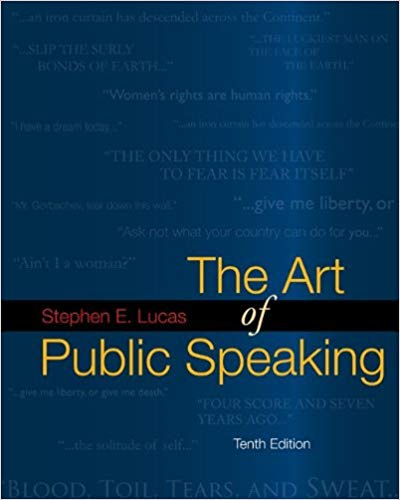The Art of Public Speaking personalizes learning for every student no matter who they are or where they are, ensuring that they come to your public speaking class confident, prepared with the principle foundations, and ready to participate in your teaching and coaching. Connect is the only integrated learning system that empowers students by continuously adapting to deliver precisely what they need, when they need it, and how they need it, so that your class time is more engaging and effective.
Notable Quotes from The Art of Public Speaking by Stephen E. Lucas:
“Your success as a speaker depends not on the subject you choose but on what you make of it.”
“The key to effective speaking is preparation—more preparation than you think you need.”
“Public speaking is not a talent; it is a skill that can be learned and improved through practice.”
“A great speech is crafted with the audience in mind, not the speaker’s ego.”
“Visual aids are not a substitute for preparation—they are a supplement to your message.”
“Your voice is your instrument; use it to convey passion, confidence, and clarity.”
“Listening is just as important as speaking in effective communication.”
Key Lessons from The Art of Public Speaking:
The Power of Preparation: Effective public speaking begins with thorough preparation. Research, outline, and rehearse to ensure you are well-equipped to deliver your message.
Know Your Audience: Tailor your message to resonate with the audience’s interests, knowledge level, and expectations to create a meaningful connection.
Organize Your Speech: A well-structured speech with a clear introduction, body, and conclusion is easier to follow and more persuasive. Use signposts and transitions for clarity.
Master Delivery Techniques: Focus on non-verbal cues, including gestures, facial expressions, and eye contact, to reinforce your words and engage your audience.
Overcome Anxiety: Stage fright is normal, but it can be managed through visualization, breathing exercises, and positive self-talk. Turn nervous energy into enthusiasm.
Use Stories and Examples: Personal anecdotes and relatable examples make abstract concepts tangible and memorable, helping the audience connect with your message.
Adapt to Feedback: Pay attention to audience reactions during your speech and adjust your tone, pacing, or content accordingly to maintain engagement.
Incorporate Visual Aids Effectively: Visual aids should enhance your presentation, not overshadow it. Use them sparingly and ensure they are simple, clear, and relevant.
Practice Active Listening: Great speakers are also great listeners. Understand your audience’s needs and feedback to refine your delivery and message.
Develop Your Style: Authenticity is crucial. While learning techniques is important, ensure your unique voice and personality shine through in your speeches.











